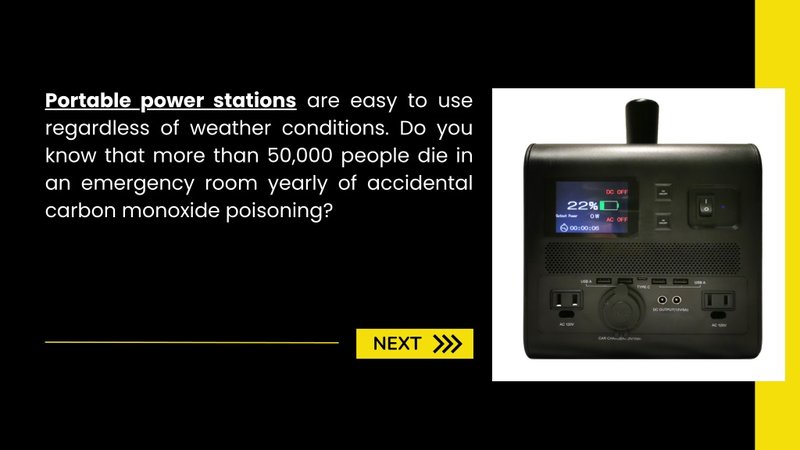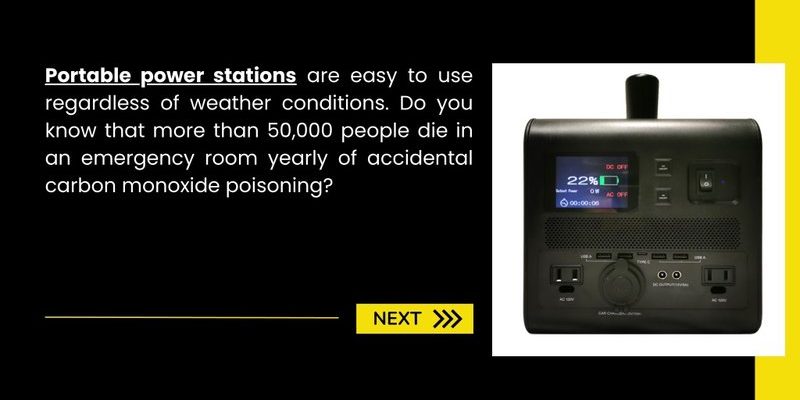
The idea of swapping out a traditional generator for something sleeker—like the Jackery Explorer or the EcoFlow Delta—sounds pretty tempting. No gasoline, no smoke, way less noise. But is it practical? Are there rules or hidden gotchas you should know about? Honestly, it depends on what you need and what New York City allows. Let’s break down how power stations work, their benefits and limits, and how they stack up in high-rise land.
How Power Stations Work (And Why They’re Different Than Generators)
Here’s the thing: power stations, sometimes called battery generators or portable power banks, are basically big rechargeable batteries. Instead of burning fuel, they store electricity you put in ahead of time—usually by plugging them into a wall, a car, or even solar panels. Think of it like a giant version of the lithium-ion battery inside your phone or laptop, but with more outlets and way more capacity.
A traditional generator is totally different under the hood. It uses gasoline (or sometimes propane) to run a motor, which then creates electricity in real time. That’s why they’re heavy, loud, and, honestly, smell pretty bad if you’re standing downwind. But they also keep running as long as you have fuel to toss in, making them popular for heavy-duty backup.
Power stations have limits—once the battery’s drained, that’s it until you recharge. But they shine in situations where you don’t want noise or fumes, and you’re mainly powering smaller stuff: phones, laptops, lights, Wi-Fi, maybe a mini fridge.
Think of a power station as a rechargeable toolbox for electricity—quiet, contained, and ready for emergencies.
What Does Zip Code 10005 (Lower Manhattan) Allow?
Now, let’s talk location. Zip code 10005 covers some of the busiest, most crowded streets in the Financial District. High-rises, apartments, tiny storefronts—if you live here, you know space is at a premium and building rules are strict. Using a generator in a city like New York isn’t as simple as rolling it outside and pulling a cord.
NYC has tight restrictions on generators, especially the portable, gas-powered ones:
- Most buildings (especially apartments and condos) ban fuel storage indoors—fire risk is just too high.
- Running a generator on a balcony or fire escape? That’s a big no. Against fire code and building rules.
- Even in private buildings, the noise and exhaust often bother neighbors—or break local ordinances.
Power stations, though, get around many of these issues. They don’t burn fuel, don’t make noise, and don’t emit fumes. As long as you’re storing and charging them safely, most buildings have no problem. Some even encourage it, since it’s a good way to keep phones and lights going during New York’s occasional power hiccups.
What Can a Power Station Handle In a City Apartment?
So, what’s realistic? Can you run your whole apartment on a Jackery or EcoFlow? Not really—but you can cover the essentials.
Most portable power stations can handle:
- Charging phones, tablets, laptops
- Powering LED lights or desk lamps
- Running a Wi-Fi router and some small fans
- Maybe a mini fridge for a few hours, depending on the model
But forget trying to run your stove, big AC unit, or a full-sized fridge for more than an hour or two. Power stations have a limited battery size—measured in watt-hours (Wh)—and high-draw appliances will drain them fast. For example, the Jackery Explorer 1000 offers around 1,000Wh. That’s enough to keep a laptop going for days, but a microwave or space heater will eat it up in under an hour.
If you’re mainly worried about the basics during a blackout—staying charged, reading, internet access—a power station is perfect for urban apartment life.
Comparing Power Stations vs. Generators: The Key Differences
Let me explain why a lot of city dwellers are making the switch. When you put power stations head to head with traditional generators, a few points really matter, especially in NYC:
- Noise: Generators are loud—like, “wake the neighbors” loud. Power stations? Completely silent.
- Emissions: Generators produce exhaust and carbon monoxide, which is especially dangerous indoors. Power stations have zero emissions, so you can safely use them in apartments (within the manufacturer’s guidelines).
- Ease of Use: With a generator, you’re hauling fuel, pulling cords, and hoping it starts. Power stations are “plug and play”—just hit the button and go.
- Maintenance: Power stations need a firmware update every now and then, maybe a battery health check, but no oil changes or spark plugs.
On the flip side, generators can run as long as you feed them fuel, while power stations are done when the battery’s out. For long outages, that’s a real limitation unless you have a way to recharge (like a solar panel out your window—not always easy in a city high-rise).
Common Troubleshooting: Pairing and Resetting Power Stations
You might be wondering: “What if my power station acts up—can I fix it myself?” Good question. Most brands like EcoFlow and Jackery design their power stations to be basically foolproof, but sometimes you’ll run into pairing, reset, or charging issues.
Here’s what usually works:
- Unit won’t turn on? Hold down the power button for 5–10 seconds. If it’s totally dead, try charging from the wall for a few hours first.
- Trouble syncing with solar panels or external batteries? Make sure all cables are fully seated. Some models need you to reset the system by unplugging everything, waiting a minute, and plugging back in—a bit like rebooting a cranky Wi-Fi router.
- Battery not holding a charge? These lithium batteries do age over time. If it’s less than a couple years old, most decent brands cover you under warranty. Otherwise, battery replacement might be needed down the line.
The good news? Unlike a finicky generator that won’t start in the cold, power stations are pretty “set it and forget it.” Just charge them once every few months so the battery stays healthy.
How to Choose the Right Power Station For Your Needs in 10005
Honestly, picking the right power station comes down to a few questions:
- What do you need to power? Make a list—phone, laptop, router, maybe a CPAP machine or mini fridge?
- How long do you want backup power to last? A night or two? Or just a few hours until the lights come back?
- How much room do you have? Some models are the size of a breadbox. Others are more like mini-suitcases.
For apartment living in zip code 10005, you probably want something compact—think Jackery Explorer 500 or Anker Powerhouse. If you’re planning to recharge with solar or run a few more gadgets, look at higher capacity models from EcoFlow or Bluetti, but keep an eye on the weight.
Availability is solid, and most big brands ship to NYC without any special rules. Just make sure you’re not stacking up too many high-watt appliances at once. Circuit breakers in older buildings don’t love it.
Safety and Storage: Using Power Stations in High-Rises
Living in a New York City high-rise means you have to take a few extra precautions—both for your own safety and to follow building rules.
- Don’t block exits. Even though power stations are small, avoid putting them in entryways or fire escape routes.
- Store at room temperature. Extreme heat (or freezing cold) hurts lithium batteries, so keep them somewhere dry and moderate.
- Follow manufacturer warnings. Don’t try to “hack” the output to run appliances bigger than the specs allow. That’s a shortcut to tripped breakers or, worse, damaged devices.
- Recharge regularly. A power station left sitting for years can lose capacity, so top it up a few times a year—even if you haven’t used it.
One last thing: if your building has specific fire safety codes about large batteries (rare, but possible in newer apartments), just check with your super or management company. Most accept power stations, but staying in the loop saves headaches later.
When to Use a Generator Instead (Or Alongside) a Power Station
There are times when a generator still makes sense, even in the city. Maybe you’re running a construction site, hosting a big outdoor event, or need to keep medical devices going for days on end. In those cases, a generator—paired with strict safety practices—might be your only bet.
But for most apartment dwellers in zip code 10005, a generator is overkill. It’s bulky, noisy, hard to store, and often not allowed. Some people combine a small generator with a power station, using the generator outside to charge the station’s battery during a prolonged outage. That way, you keep your living space fume-free and only run the noisy engine when absolutely necessary.
Final Thoughts: Is a Power Station Enough in 10005?
All things considered, power stations are a smart, city-friendly alternative to generators in zip code 10005. They’re clean, quiet, portable, and generally apartment-approved. For storm blackouts, short-term outages, or even camping out in your living room with the lights out, they cover the basics with almost no hassle.
Of course, if you absolutely need to power heavy-duty equipment for several days, you’ll hit their limits fast. But for most Lower Manhattan residents who just want reliable backup for essentials, a portable power station checks all the right boxes—without running afoul of city codes or your neighbors.
In short: if you want peace of mind next time the lights go out, a power station isn’t just a substitute for a generator in 10005—it’s probably your best bet.
